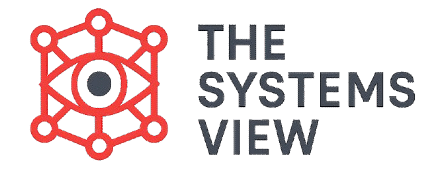Following the foundational work of Jay W. Forrester and the global application by Donella Meadows, Peter Senge became the figure most responsible for bringing Systems Thinking out of academic theory and applying it directly to the corporate world and practical management.
Senge (born 1947) is a management scientist and former Director of the Center for Organizational Learning at the MIT Sloan School of Management. His landmark 1990 book, The Fifth Discipline: The Art and Practice of the Learning Organization, became a worldwide bestseller. This book translated the complex concepts of System Dynamics into clear, practical advice for business leaders, arguing that the only way for any organization to survive long-term is its ability to learn faster than its environment and its competitors.
The Cure for Learning Disabilities
Senge argued that most companies are deeply flawed because they suffer from “learning disabilities.” These disabilities include the common tendency to blame outside factors (like competitors or the economy) instead of recognizing how their own policies and decisions create their problems. Senge introduced the concept of the Learning Organization as the cure.
The Learning Organization is defined as a place where people continually expand their capacity to create the results they truly desire, where new and expansive patterns of thinking are nurtured, and where collective aspiration is set free. To build this kind of organization, Senge identified five interdependent disciplines.
The Five Disciplines of the Learning Organization
Senge stressed that the five disciplines are like components of a complex system; they must all be developed together, but one discipline provides the essential structure.
Systems Thinking (The Fifth Discipline) 🔄
This is the integrating discipline. It shows how the other four disciplines interact and how the organization is truly an interconnected system. Systems Thinking provides the language and tools (like Causal Loop Diagrams from System Dynamics) that allow people to see the whole structure instead of just isolated events. Without this discipline, managers will always fall back into linear, short-term thinking.
Personal Mastery 🧘
This involves continually clarifying and deepening one’s personal vision, focusing energies, and developing patience. It means approaching life as a creative work, always learning and seeking to achieve results that truly matter. Senge views the organization’s capacity for learning as being built from the commitment and learning of its individual members.
Mental Models 🤔
This discipline requires constantly examining our own deeply ingrained assumptions, generalizations, or beliefs that influence how we understand the world and take action. A manager must become skilled at bringing hidden mental models to the surface—not just their own, but those of the entire organization—to test them against reality.
Building Shared Vision 🎯
This is the practice of fostering genuine commitment in a group by developing shared images of the future they seek to create. This common picture of the desired future acts as a powerful Balancing Loop in the organizational system, providing the necessary guidance and energy for all teams to move toward the same long-term goal.
Team Learning 🗣️
This discipline begins with dialogue, where members suspend their individual assumptions and genuinely think together. It focuses on the team’s capacity to develop alignment and insight. Team Learning ensures the collective intelligence of the group exceeds the sum of individual talents, creating a significant emergent property of the organization.
The Practical Application: Archetypes and Leverage
Senge emphasized that managers must apply the principles of System Dynamics to understand complexity. Like Donella Meadows, he stressed the importance of finding leverage points.
Using System Archetypes
Senge showed managers how to apply the principles of System Dynamics by using common System Archetypes. These are simplified, recurring structures of feedback loops that appear in countless organizational settings. Learning them allows managers to quickly diagnose the root cause of chronic organizational problems.
- “Shifting the Burden”: This key archetype describes a vicious cycle where a fundamental problem is ignored, and managers use a quick, symptomatic fix (e.g., constantly working overtime instead of hiring more staff). The quick fix relieves pressure, but the underlying, fundamental problem gets worse over time.
- “Tragedy of the Commons”: This archetype occurs when individuals use a shared, finite resource (like budget or shared equipment) based on their own self-interest, eventually depleting it to the detriment of everyone.
The Strategic View
Senge’s work forces managers to look for the highest leverage points in their policies and structure, not just the technical details. His goal was to move management from reactive decision-making to generative learning—the capacity to create something new.
Conclusion
Peter Senge successfully translated the rigorous modeling tools of System Dynamics into a comprehensive, practical framework for organizational learning and management. By making Systems Thinking the central, integrating discipline and detailing the Five Disciplines, he empowered business leaders to look past simple events, understand the interconnected nature of their organization, and find the structural leverage points necessary for long-term survival and success. His work proved that the ultimate path to sustained competitive advantage is the capacity to learn as a whole system.

